In pictures: the making of the Piers Morgan Tonight theme music
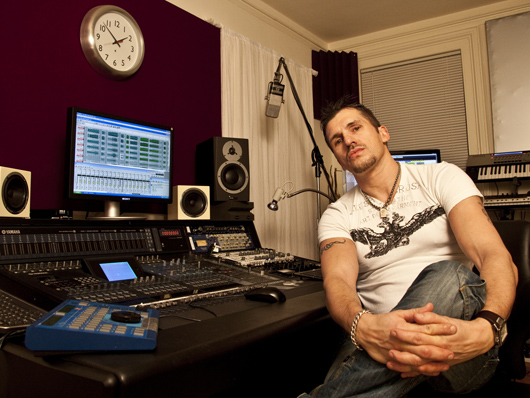
Getting the gig
Say what you like about Piers Morgan (actually, don’t - his lawyers might be watching) but there’s no doubt that the recent launch of his CNN show ‘Piers Morgan Tonight’ was big news. As the replacement for Larry King Live, the show was hotly anticipated, so when British-born composer Anthony James (above) and writing partner Yiorgos Bellapaisiotis landed the job of composing the theme, they knew they had to deliver. This is the story of how they got the job done.
“It took two weeks to do and the deadline was getting closer so the pressure was on to write ‘That Theme’ that ultimately Jonathan Wald, the show’s Executive Producer, would hear and say “this is it!”, says Anthony James.
“Finally, one Tuesday morning after a full night of mixing and trying various things in our Upper East Side studio, I sent off the rough mix as an MP3 and went to bed at 8am. When I woke I had many emails to say “We Love It” - ‘we’ were Jonathan and Piers, who were in LA at the time recording the Oprah Winfrey interview. I guess Piers had to like it too!”
NEXT: Recording the strings
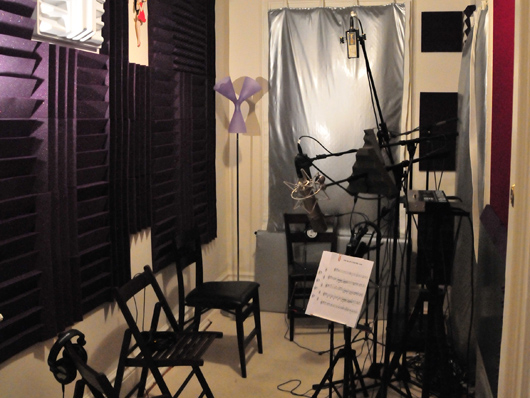
Strings
“In order to create the big sound CNN were looking for I wanted live strings on the Sonic Identity and Main Theme track,” says Anthony. “I record a great group of musicians here in New York and they're not your normal session players, they're all virtuosi in their own right and a real joy to work with.
“I don't have a large live room but it can hold up to six players and that's always a challenge from a sound point of view, as there's not going to be a lot of air for the sound. The tonality of the room is actually great, though: I have the usual Auralex foam with T-fusers dotted around for a more natural ping!
“However, with six players tracking four or five times the same or divisi parts, I thought it would be cool if the players swapped chairs between each take to get a different sound on the spot and ambient mics. It’s my ‘musical chairs with strings attached’ technique. This caused a riot with them [the players] and they loved it. It really made a difference to my normal string sessions. The depth was gorgeous and the mics picked up each player’s own way of doing things, but with this technique it was different on every overdub, giving it a larger sound.”
NEXT: Drums
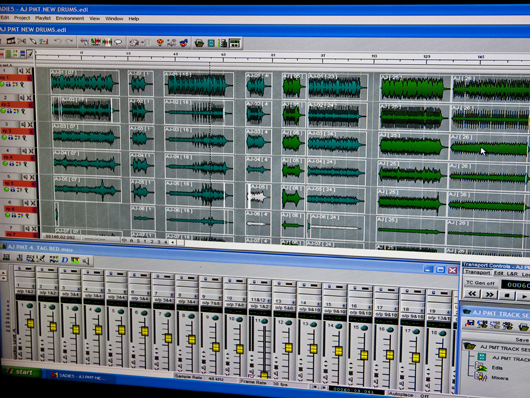
Drums
“All the live instruments were recorded onto Sadie’s HD64 [pictured above]. A lot of people are surprised I use this but it really works for me and is flawless on heavy live sessions.
“The live kit starts in the theme with a four-on-the-floor kick at 131BPM; then eight bars later building a little tension with a syncopated beat with tom overdubs; and then finally going into a straight rock beat for the end of the theme.
“I used my usual set of drum mics, including the legendary MD441 on the snare and two mics on the kick - an Audix Kick mic inside the bass drum pointing slightly up towards the beater and then about two feet away from the bass drum the fantastic AKG 414 to pick up a bit of the room. Then, for overheads I used the Earthworks SR25 (matched pair) which were amazing. My Drummer Brian [Delaney, of New York Dolls fame] recommended those.
NEXT: Lead lines
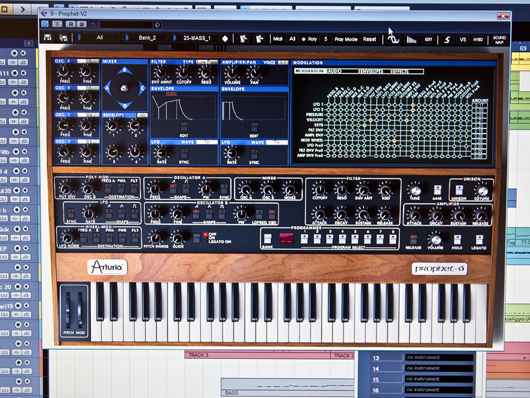
Lead lines
“OK, so we had the drums locked down and various pads and rough sequence lines, but one of the things that was going through my head was ‘what sound do I use for a lead line building up to the live string section?’ I tried various things, from a multitude of plug-ins I have in the VST bank in Cubase 5 (which I love by the way - many great improvements) but it was sounding too trance. It is still CNN, not a dance track, so it had to be cool but not abrasive.
“I thought that the Prophet V from Arturia’s VST collection would give me the answer, and it did. There are two versions of the theme that have very different lead lines: one is an arpeggiator synth from Rob Papen’s Albino which I filtered to death and the other was a patch from the Prophet which I played into Cubase and then added delays. This was really effective in building up to the strings and then continuing under the full section with less level.”
NEXT: Mixing
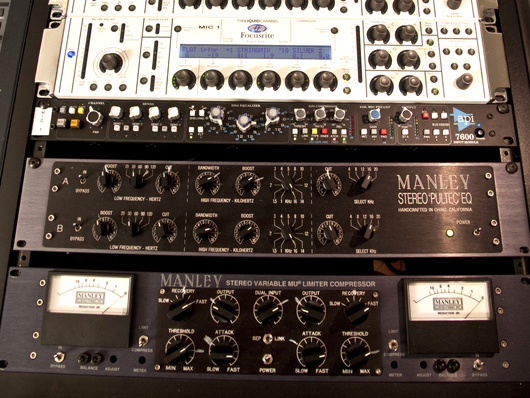
Mixing
“After we’d done all the tracking and all the musos had gone home it was mix time. Now we were really up against it time-wise as it was four days to go until the air date.
“After catching up on some much needed sleep, we started. On the main output buss, I have a Manley Stereo Pultec EQ and before that the Manley Variable MU Limiter/Compressor. The drums overhead track went through very little extra EQ but the kick was put into the gorgeous API 7600. Dialling in the right EQ and compression for the kick was easy and a joy with the API. The snare went through Grace Designs’ M103 and it had no problem sticking out the way I wanted it to in the mix. I hardly touched the strings as I wanted to keep the natural dynamics, although I did EQ them quite a bit. Then it was time to balance the 16 outputs from Cubase into my DM2000 (V2) console and we were on the home run.”
NEXT: Job done
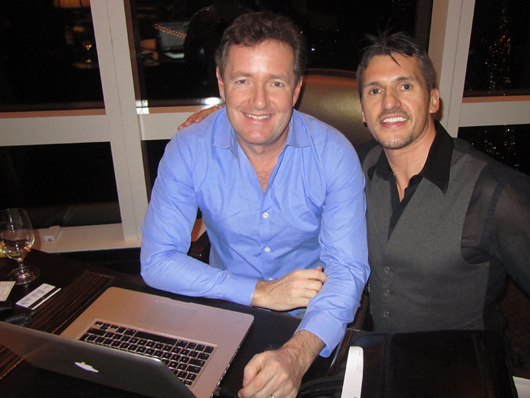
Job done
“On the night of the first network airing in America we all went to Piers’ suite at the Mandarin Oriental Hotel here in New York, drank champagne and watched the show whilst Piers was behind me on Twitter, tweeting like a bird. As the theme played out, Piers shouted out to us ‘Hey guys, love the music, well done!’ After that night I felt a huge weight lift off my shoulders and I could continue with normal life!”
LISTEN: Piers Morgan Tonight main theme
Liked this? Now read: The quick guide to creating a soundtrack
Connect with MusicRadar: via Twitter, Facebook and YouTube
Connect with Rhythm: via Twitter and Facebook
Get MusicRadar straight to your inbox: Sign up for the free weekly newsletter

I’m the Deputy Editor of MusicRadar, having worked on the site since its launch in 2007. I previously spent eight years working on our sister magazine, Computer Music. I’ve been playing the piano, gigging in bands and failing to finish tracks at home for more than 30 years, 24 of which I’ve also spent writing about music and the ever-changing technology used to make it.
“I’m looking forward to breaking it in on stage”: Mustard will be headlining at Coachella tonight with a very exclusive Native Instruments Maschine MK3, and there’s custom yellow Kontrol S49 MIDI keyboard, too
MusicRadar deals of the week: Enjoy a mind-blowing $600 off a full-fat Gibson Les Paul, £500 off Kirk Hammett's Epiphone Greeny, and so much more
“I’m looking forward to breaking it in on stage”: Mustard will be headlining at Coachella tonight with a very exclusive Native Instruments Maschine MK3, and there’s custom yellow Kontrol S49 MIDI keyboard, too
MusicRadar deals of the week: Enjoy a mind-blowing $600 off a full-fat Gibson Les Paul, £500 off Kirk Hammett's Epiphone Greeny, and so much more









